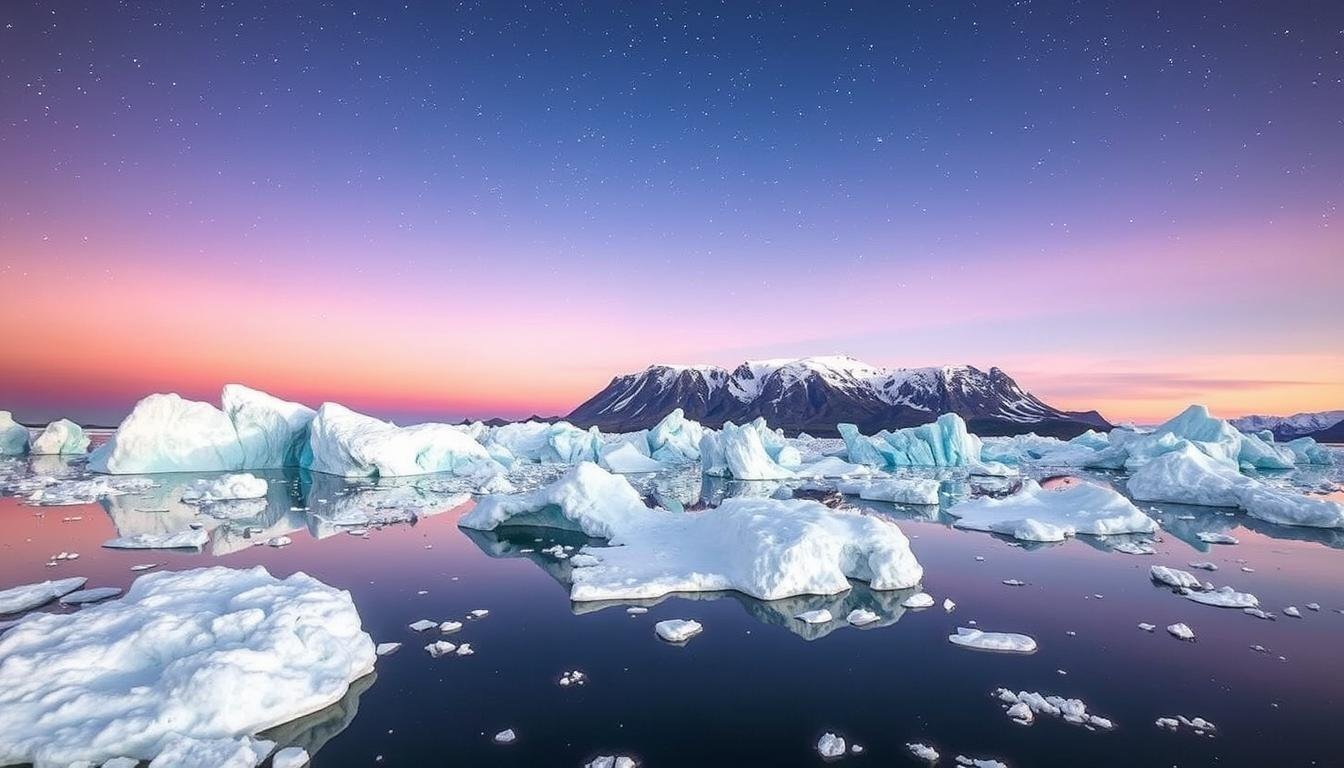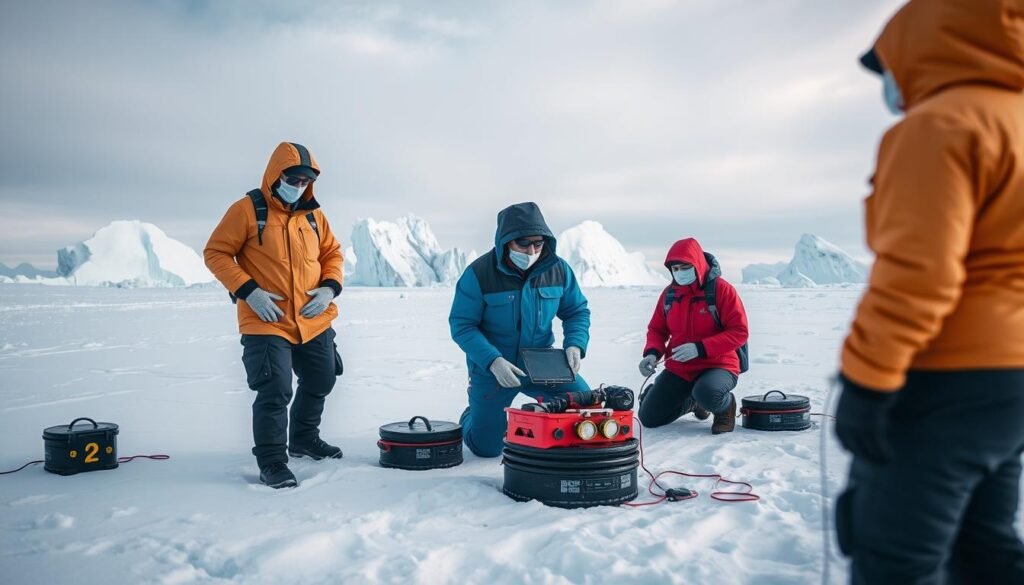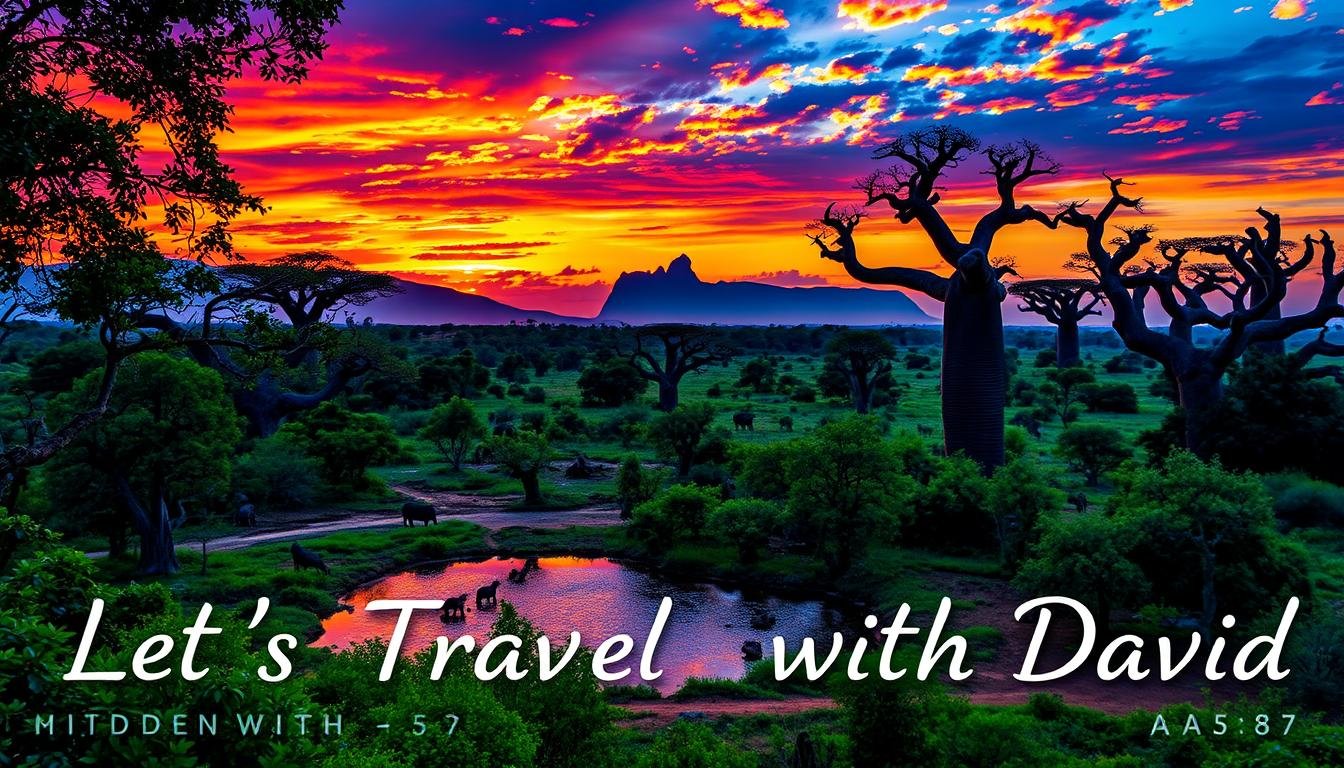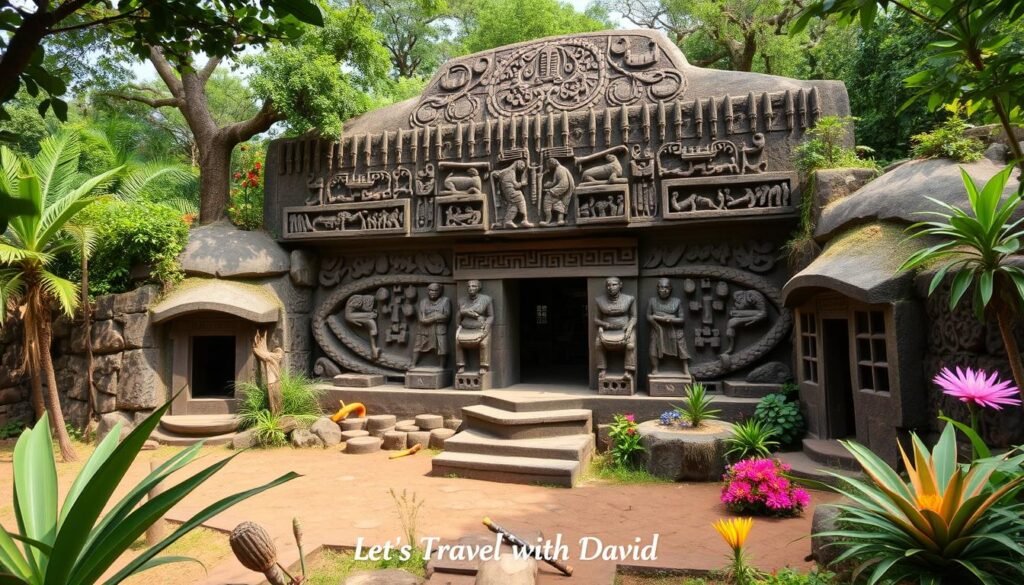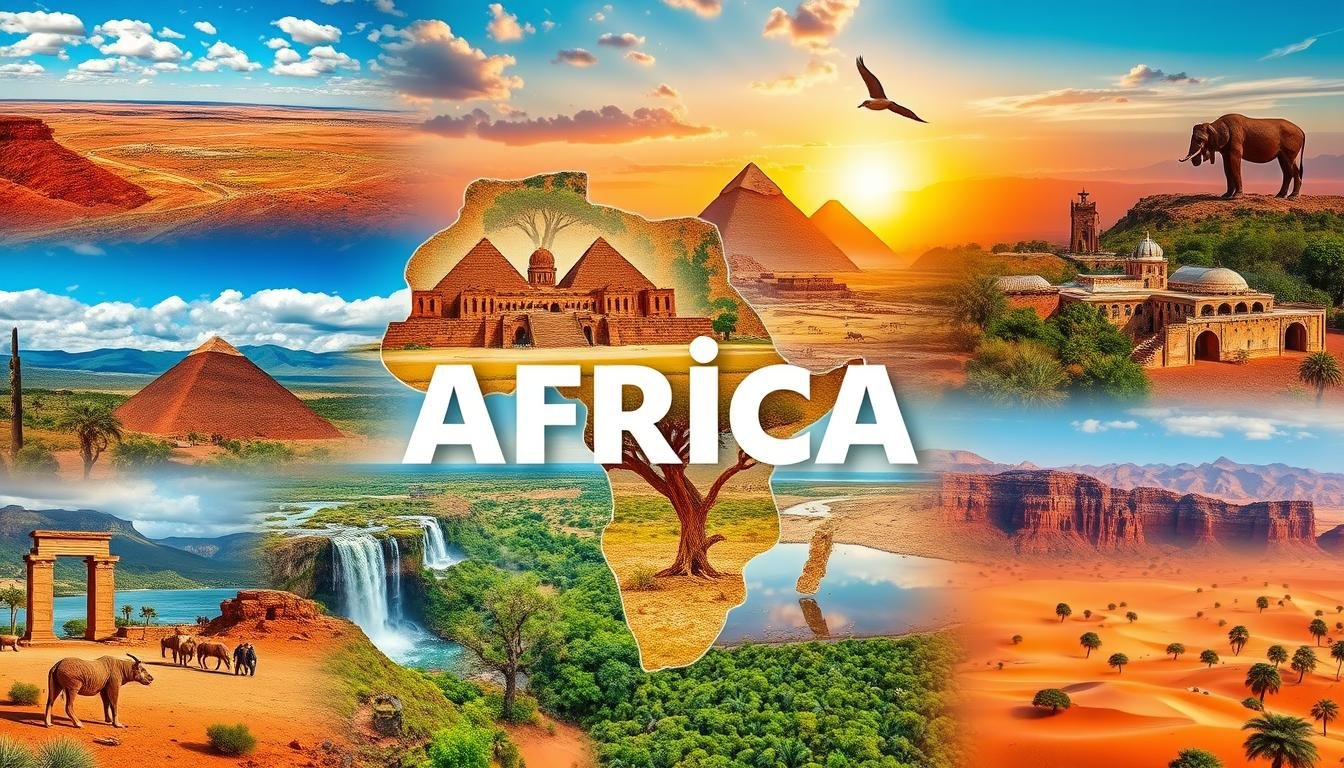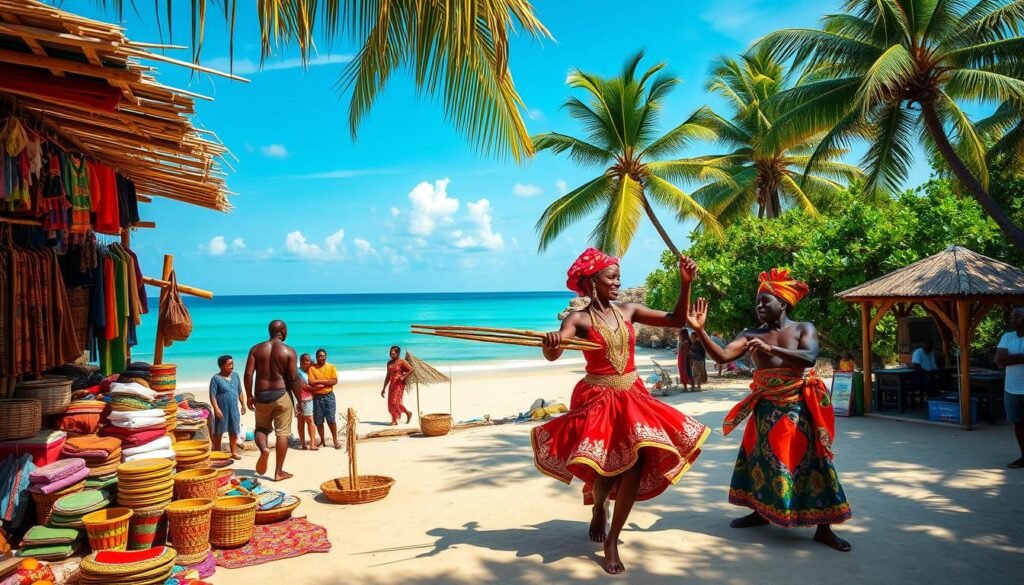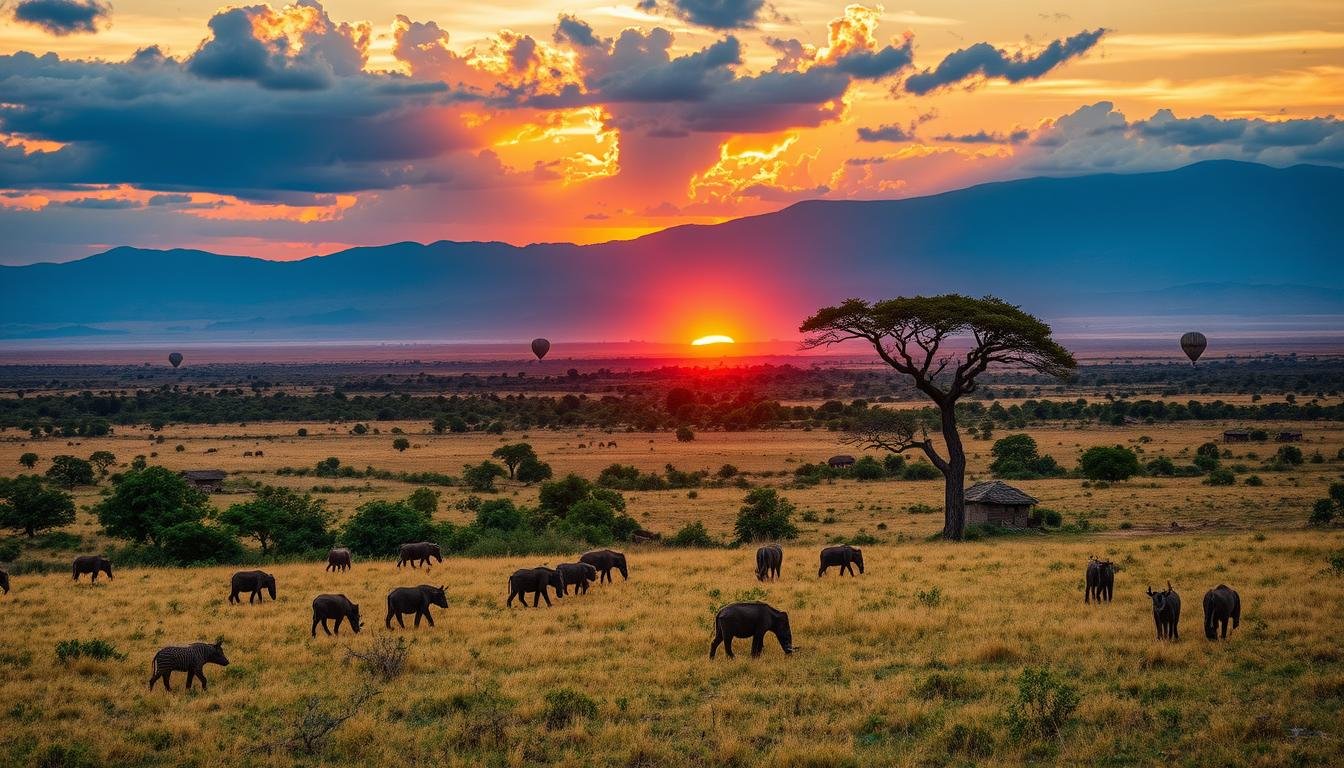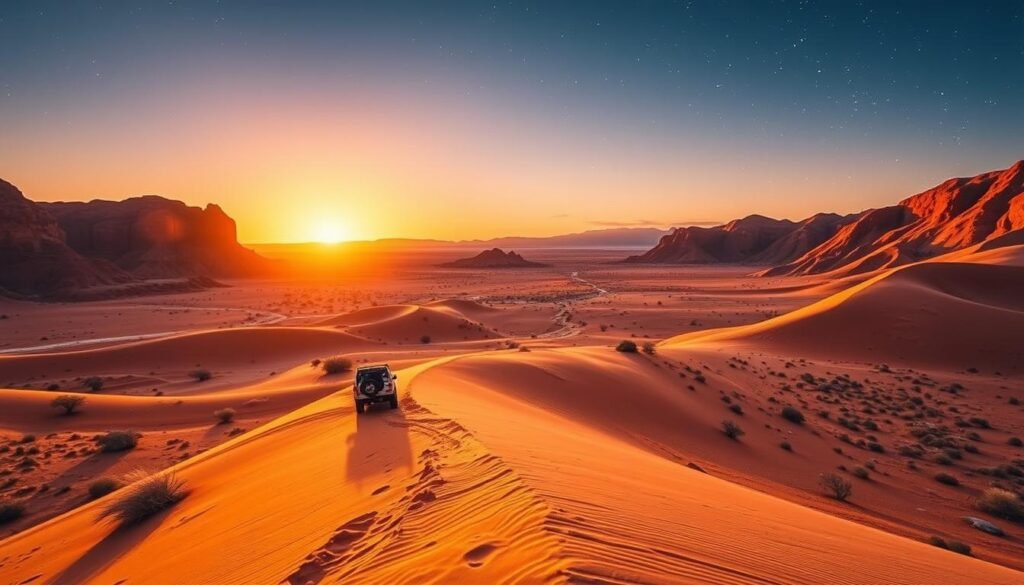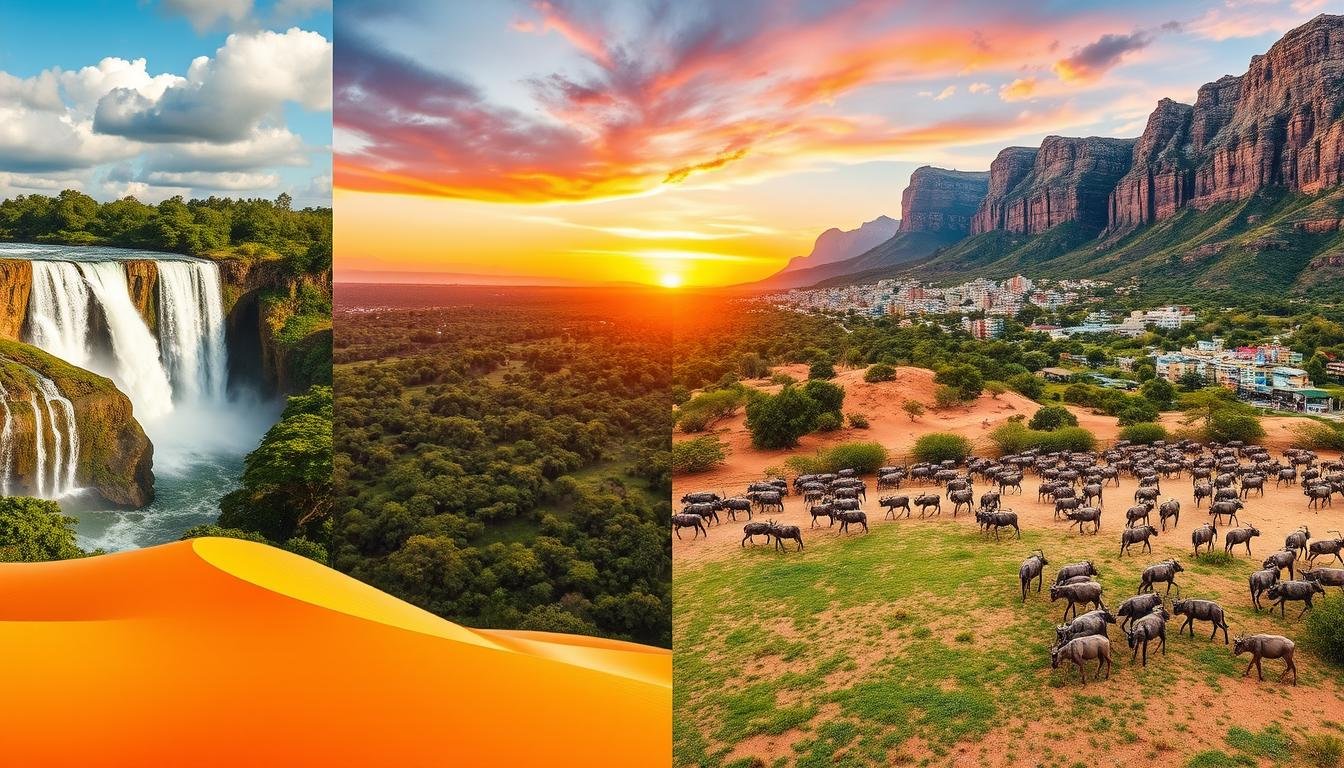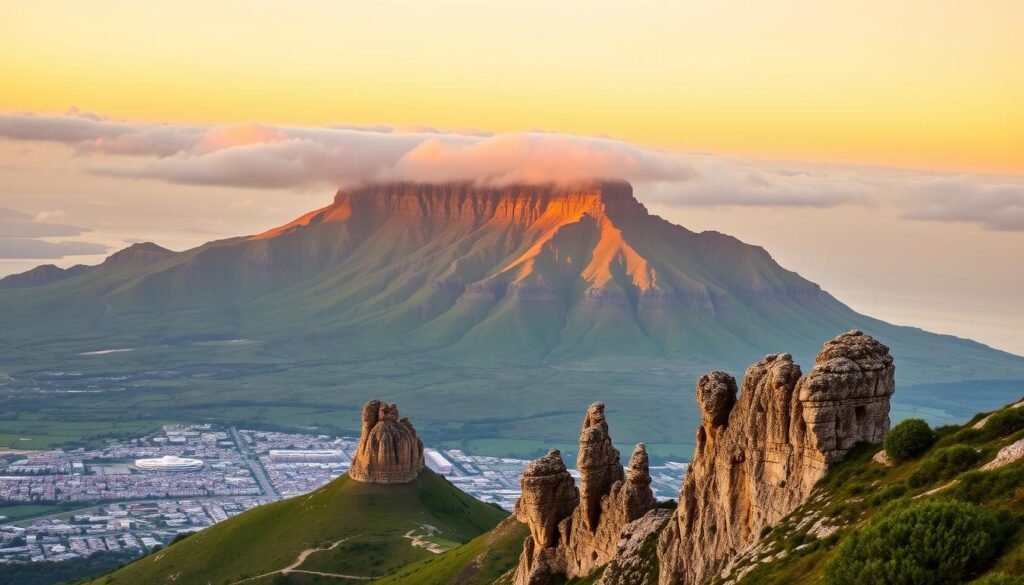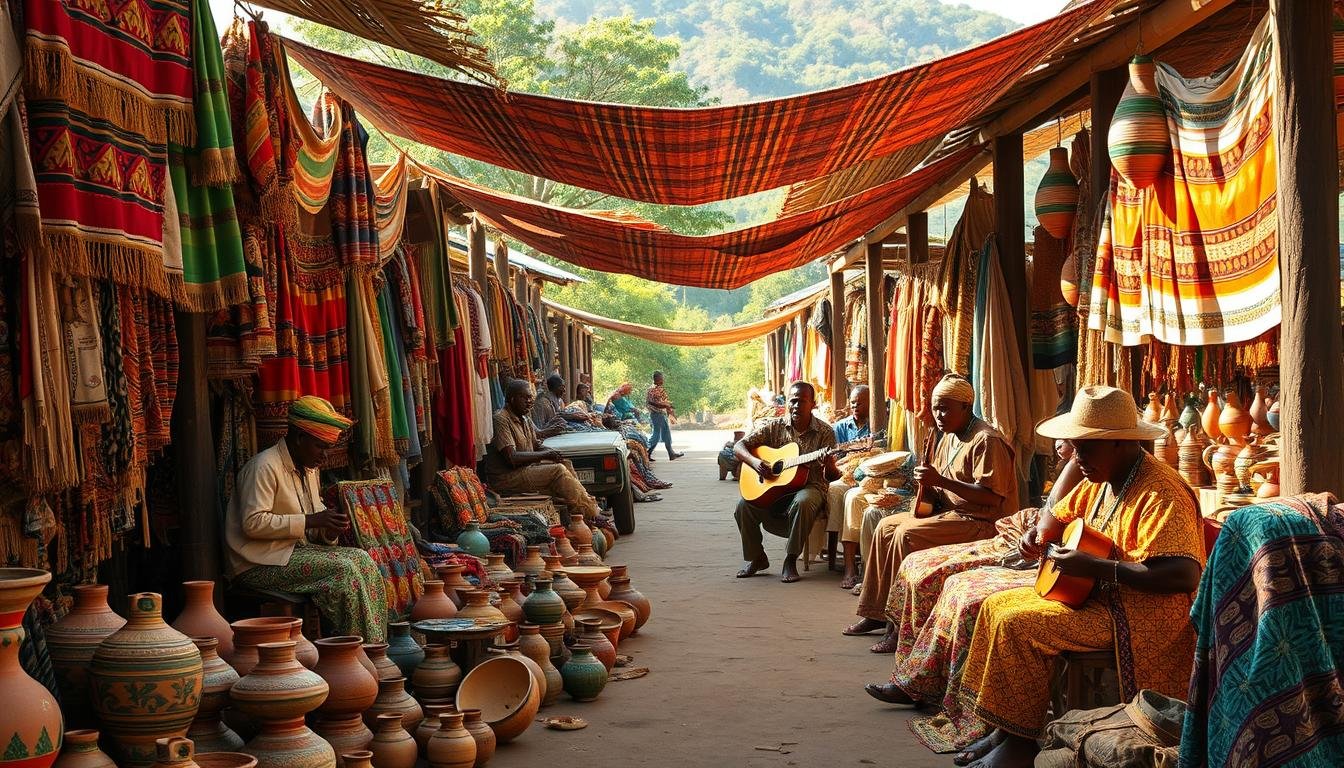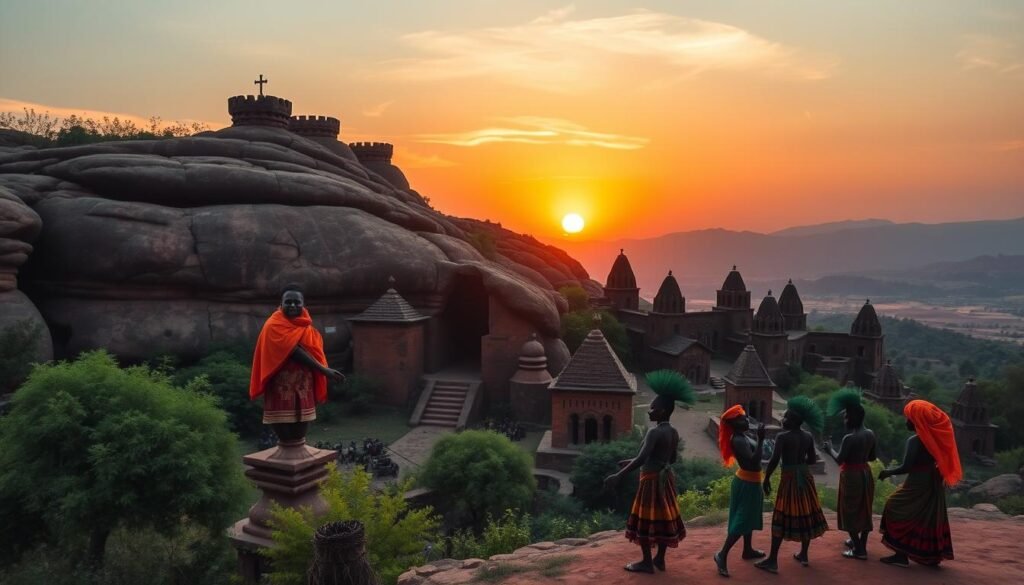As the sun sets, its light dances across the ice and snow. This creates a scene that’s hard to put into words. Antarctica, the last untouched wilderness, has drawn explorers and scientists for centuries. If you dream of seeing its beauty, now is the time to start your journey.
Antarctica, known as the “Last Continent,” is full of natural wonders. Its towering peaks and diverse wildlife are just the beginning. Seeing penguin colonies, marine mammals, and unique landscapes will change you forever.
Key Takeaways
- Explore the last true wilderness on Earth – the untamed beauty of Antarctica.
- Encounter an array of unique wildlife, including penguins, seals, whales, and seabirds.
- Witness breathtaking landscapes of ice, snow, and towering mountains.
- Embark on thrilling adventures such as kayaking, hiking, and camping under the Antarctic skies.
- Follow in the footsteps of famous polar explorers and learn about the region’s rich history.
Discovering Antarctica: The Last Pristine Wilderness on Earth
Explore the extreme travel destination of Antarctica, a land of unmatched natural wonders. It’s the southernmost continent, untouched by humans, filled with exciting expeditions. This place is a true wilderness, untouched and full of life.
Understanding the Geographic Uniqueness
Antarctica covers almost 14.2 million square kilometers, making it the fifth-largest continent. It’s in the Southern Ocean, known for its harsh climate. Temperatures range from -10°C (14°F) on the coast to -60°C (-76°F) at the highest points.
Its size and isolation make it a unique destination for those who love adventure. It’s a place where you can see the limits of nature.
The Role of International Treaties
Keeping Antarctica pristine is a global goal. The Antarctic Treaty System, in place since 1959, helps achieve this. It makes Antarctica a continent for peace and science, banning military activities and managing resources responsibly.
Thanks to international efforts, Antarctica remains untouched. It’s a true wilderness, untouched by human greed.
Going on an expedition to Antarctica is an unforgettable experience. You’ll see amazing landscapes, diverse wildlife, and the history of polar expeditions. It’s a remote and captivating region of the world.
Reasons to visit Antarctica Why visit the White Continent Top attractions in Ant
Antarctica, the world’s last untamed frontier, calls to adventurous travelers. It offers awe-inspiring natural wonders. From the iconic white continent attractions to the captivating antarctic wildlife and breathtaking antarctic landscapes, it’s a unique and unforgettable experience.
One of the top attractions in Antarctica is seeing the incredible penguin colonies along the coast. Watch as these charismatic creatures waddle, dive, and care for their young. It’s a glimpse into their fascinating social behaviors.
- Witness the majestic Emperor Penguin, the largest of the penguin species, in their natural habitat.
- Spot the playful Adélie Penguins, known for their black-and-white tuxedo-like appearance.
- Explore the bustling Gentoo Penguin colonies, renowned for their distinctive orange beaks and lively demeanor.
The antarctic landscapes are truly awe-inspiring. Gaze in wonder at towering glaciers, pristine icy fjords, and vast, untamed wilderness. It offers a sense of serenity and isolation unlike anywhere else on Earth.
| Top Attractions in Antarctica | Description |
|---|---|
| Crossing the Drake Passage | Experience the thrill of navigating the treacherous waters between South America and Antarctica, known for their unpredictable weather and wildlife-rich seas. |
| Visiting Historic Research Stations | Explore the legacy of famous polar explorers by visiting iconic research stations, such as the Amundsen-Scott South Pole Station or the British Antarctic Survey. |
| Spotting Marine Mammals | Encounter majestic whales, seals, and sea lions in their natural habitat, including the playful Weddell Seals and the awe-inspiring Southern Right Whales. |
Whether you’re drawn to the white continent attractions, the captivating antarctic wildlife, or the breathtaking antarctic landscapes, a journey to Antarctica promises a truly unforgettable adventure. It will leave a lasting impression on your heart and mind.
Encountering Extraordinary Antarctic Wildlife
Step into Antarctica’s wild and you’ll meet a wide range of amazing animals. See penguin colonies and majestic marine mammals in their home. This frozen land shows us the strength and beauty of animals.
Penguin Colonies and Their Behaviors
Penguins are the main attraction in Antarctica. Watch thousands of them move together, care for their young, and explore the ice. See their cute behaviors, like courtship and nesting, and how they survive the cold.
Marine Mammals in Their Natural Habitat
Out on the water, you’ll see seals, whales, and more. Watch seals on ice floes and whales breaching for krill. These creatures show how life can thrive in the antarctic wildlife.
Seabird Spotting Opportunities
The skies of Antarctica are filled with seabirds, from albatross to petrels. Watch them fly, dive, and nest on the coast. Take amazing photos of these birds against the antarctic expeditions scenery.
| Antarctic Wildlife | Behaviors and Characteristics |
|---|---|
| Penguins | Flightless birds that live in large colonies, known for their courtship rituals, nesting behaviors, and remarkable adaptations to the harsh environment. |
| Seals | Marine mammals that bask on ice floes and are adept swimmers, using their whiskers and sensitive skin to navigate the icy waters. |
| Whales | Majestic marine mammals that feed on the abundant krill, known for their powerful breaching and graceful movements. |
| Seabirds | Diverse species of birds that soar effortlessly, dive for prey, and nest along the rugged coastlines of Antarctica. |
“The antarctic wildlife is a constant source of wonder and amazement, offering a glimpse into the resilience and beauty of life on our planet.”
Breathtaking Landscapes of Ice and Snow
Step into a world of unparalleled beauty as you explore the antarctic landscapes of the white continent. Antarctica, the last great wilderness on Earth, captivates visitors with its stunning ice formations, towering glaciers, and majestic mountain ranges. The Lemaire Channel and Paradise Harbor are just a few spots where you can see breathtaking views.
Imagine standing in awe before the colossal Gerlache Strait. Here, massive tabular icebergs float in turquoise waters, reflecting the sky above. The Weddell Sea offers intricate patterns of sea ice, creating a mesmerizing canvas of white and blue. The Filchner Ice Shelf is a towering wall of ice that stretches as far as the eye can see.
“Antarctica is a mystical place, a continent of superlatives, of extremes, of beauty and wonder.” – Michael Fagin
As you explore the antarctic landscapes, you’ll be captivated by the ever-changing vistas. Here, ice, snow, and sky come together in a symphony of natural wonder. This is a land where earth, water, and air blur, leaving you enchanted.
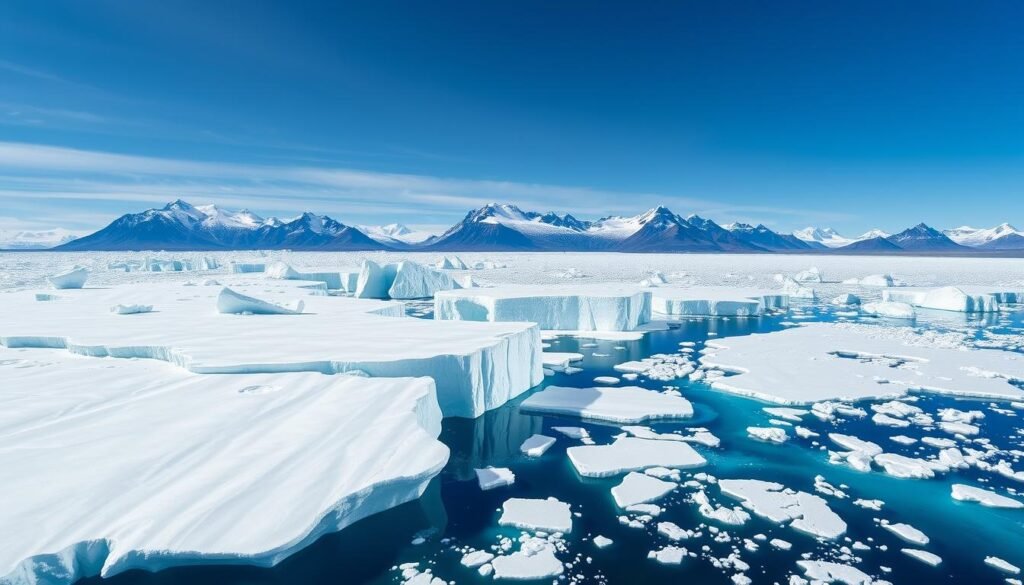
Adventure Activities in the Antarctic Region
Going on an Antarctic adventure is a chance to see the untouched beauty of the White Continent. You can try exciting outdoor activities that show off the area’s stunning landscapes and power.
Kayaking Through Ice Fields
While kayaking in Antarctica’s icy waters, you’ll see amazing wildlife up close. You can move through narrow channels, past huge icebergs, and meet curious seals, whales, and birds.
Polar Hiking Experiences
Hiking in Antarctica is for those who love adventure. You can walk on the tundra, explore glaciers, climb peaks, and enjoy the quiet of the continent.
Camping Under Antarctic Skies
For a real antarctic adventure, try camping on the ice. See the extreme travel destinations Aurora Australis, the Southern Lights, as you sleep under the Antarctic sky. It’s a chance to feel the power and peace of this special place.
Antarctica offers many antarctic adventure activities like kayaking, hiking, and camping under the polar lights. It’s a place for bold travelers to explore and make unforgettable memories.
Experiencing the Midnight Sun and Polar Nights
Visiting the white continent of Antarctica is a unique experience. You’ll see the midnight sun and polar nights, which are fascinating. These are part of the antarctica tourism offerings.
The midnight sun is a breathtaking sight. In summer, the Antarctic Circle has 24 hours of daylight. This lets you see the stunning landscapes and wildlife under constant light. It adds a magical touch to your adventures.
On the other hand, the polar nights in winter cover the white continent attractions in darkness. The sky is black, except for the Southern Lights. Seeing the Aurora Australis is a must, with its vibrant colors dancing in the sky.
These lighting conditions create a captivating atmosphere. They also affect the local wildlife. Penguins and marine mammals change their ways to cope with the light changes. As you explore, remember how these phenomena shape the ecosystem and your experience.
“The Antarctic is a world apart, a frozen desert where the supply of everything – water, food, heat, light – is dependent on the seasons.” – Kim Stanley Robinson
Following in the Footsteps of Famous Explorers
The Antarctic continent has drawn adventurers and explorers for centuries. Sir Ernest Shackleton and Roald Amundsen’s journeys are filled with bravery and scientific discovery. As you plan your trip to antarctica, you’ll follow in their footsteps and learn about their legacy.
Historic Research Stations
Antarctica is home to historic research stations like McMurdo and Amundsen-Scott South Pole Station. These places offer a look into the past and are still centers for scientific research today. Visiting these sites lets you connect with the history of antarctic expeditions and understand the challenges faced by pioneers.
Legacy of Polar Expeditions
The stories of Shackleton and Amundsen are part of Antarctica’s history. Their discoveries and records still inspire today. By following their paths, you’ll experience the adventure and drama of early Antarctic exploration. This will give you a deeper respect for the pioneers who opened the continent to us.
“The essential thing is not to have conquered but to have fought well.” – Ernest Shackleton
Photography Opportunities in the White Desert
Exploring the antarctic landscapes of the white continent attractions is a unique photography adventure. You can capture the diverse wildlife and the stunning glacial formations. Antarctica is a photographer’s dream, offering a canvas unlike any other.
Photographers flock to Antarctica to see the vibrant penguin colonies. These colonies are a sight to behold, with penguins going about their day. The scenery around them is breathtaking, making for stunning photos.
But there’s more to see than just penguins. You can also capture seals, whales, and seabirds in their natural habitats. Watching these creatures in the icy waters and rugged shores is an unforgettable experience.
| Photography Tip | Benefit |
|---|---|
| Invest in a high-quality telephoto lens | Allows you to capture wildlife from a safe distance without disturbing their natural behaviors |
| Embrace the changing light conditions | The ever-shifting light in Antarctica can create breathtaking effects, from the soft glow of the midnight sun to the dramatic shadows cast by the snow and ice |
| Experiment with long exposure techniques | Capture the movement and fluidity of the glaciers, icebergs, and crashing waves |
Whether you’re a pro or just starting out, the antarctic landscapes of the white continent attractions are full of photo opportunities. With a keen eye and appreciation for nature, you can create lasting images.
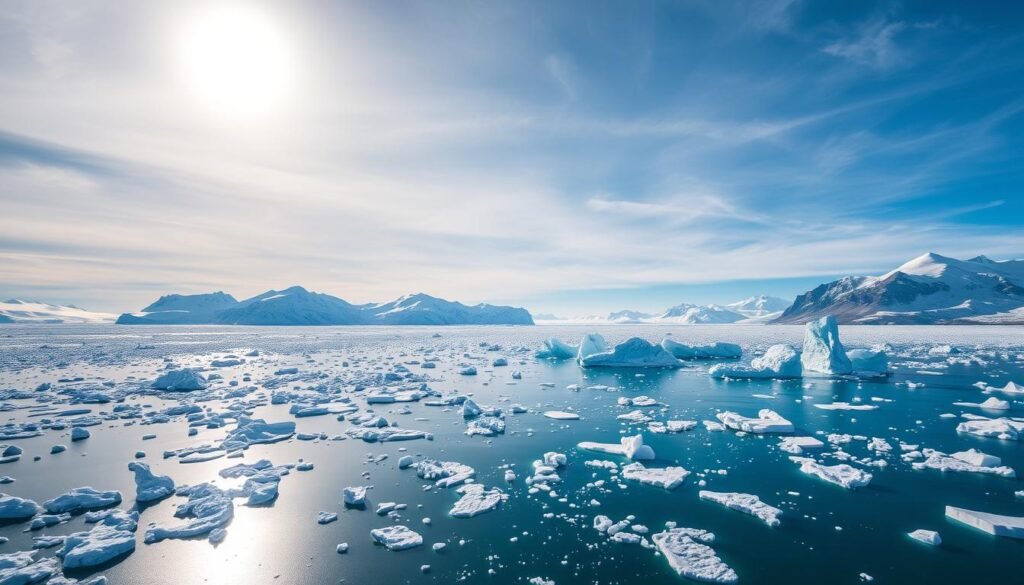
Scientific Research and Environmental Conservation
Antarctica is the last untouched wilderness on Earth. It’s a key place for scientific research and protecting the environment. The unique climate, geology, and wildlife make it perfect for studying climate change and keeping the ecosystem balanced.
Climate Change Studies
Antarctica leads in climate change research. Its ice sheets and glaciers offer valuable data on climate patterns. Scientists from all over work together, using advanced tech and long-term studies.
These efforts help us understand the Earth’s climate better. They also guide policymakers on the need to act against climate change.
Wildlife Research Programs
The wildlife in Antarctica is diverse and fragile. Scientists study the behaviors and populations of penguins, seals, whales, and seabirds. This research is key for protecting these iconic creatures and the ecosystem.
Visitors can help by joining citizen science programs and supporting eco-tourism. These activities focus on sustainable practices.
| Type of Research | Focus Areas | Key Findings |
|---|---|---|
| Climate Change Studies |
|
|
| Wildlife Research |
|
|
By visiting Antarctica and supporting responsible tourism, you help the research and conservation efforts. Your involvement in research and eco-tourism can make a big difference. It supports the future of scientific research in antarctica and antarctic wildlife.
Practical Guide to Antarctic Cruises and Expeditions
Planning an antarctic cruises or antarctic expeditions is exciting but can feel overwhelming. But with the right info and prep, you’re set for an adventure of a lifetime. This guide will cover the best times to visit, cruise types, and what to pack for your trip.
When to Visit Antarctica
The Antarctic summer, from November to March, is the best time for antarctic cruises and antarctic expeditions. The weather is milder, with more daylight. This means better chances to see the stunning landscapes and wildlife.
Choosing the Right Cruise
There are many antarctic cruises to choose from. You can pick from traditional expeditions to luxury cruises. Look at the itinerary, ship, and amenities to find your perfect match.
Packing for the Journey
Packing for an antarctic expedition needs careful thought. The weather can change quickly, so pack warm, waterproof clothes. Remember sturdy boots, gloves, hats, and sunscreen. Also, bring binoculars, a camera, and a journal to remember your journey.
| Item | Importance |
|---|---|
| Warm Layers | Essential for protecting against the cold Antarctic climate |
| Waterproof Outerwear | Crucial for staying dry during shore excursions and water activities |
| Sturdy Boots | Necessary for navigating the uneven terrain and icy conditions |
| Gloves and Hat | Important for keeping your extremities warm and protected |
| Sunscreen and Sunglasses | Vital for shielding your skin and eyes from the intense Antarctic sun |
By following these tips, you’ll be ready for an amazing antarctic cruises or antarctic expeditions. You’ll get to see the incredible beauty of Antarctica.
Conclusion
As you start your journey to the White Continent, you’ll find Antarctica unlike any other place. This untouched wilderness is full of amazing wildlife and stunning landscapes. Your visit will be a once-in-a-lifetime experience.
Antarctica is home to fascinating penguin colonies and peaceful marine mammals. Your time here will leave a lasting mark on you.
There are many reasons to visit Antarctica. You can see unique landscapes, follow in the footsteps of famous explorers, and take incredible photos. Whether you’re into adventure or learning about science and conservation, you won’t be disappointed.
When planning your trip, remember to travel responsibly. By being careful and preserving the environment, you help ensure future generations can see Antarctica’s wonders. This is your chance to explore and make unforgettable memories.
FAQ
What makes Antarctica a unique travel destination?
Antarctica is the last untouched wilderness on Earth. It offers a unique travel experience. The continent is famous for its wildlife, landscapes, and adventures. It’s a dream destination for many.
What are some of the top attractions in Antarctica?
Top attractions include seeing wildlife like penguins and whales. You can also explore ice formations and glaciers. Activities like kayaking and camping under the stars are unforgettable.
Can I see the midnight sun or polar nights in Antarctica?
Yes, you can see the midnight sun and polar nights in Antarctica. These unique lighting conditions are highlights of visiting. They create an otherworldly experience.
What kind of adventure activities can I participate in during my Antarctic expedition?
Antarctica offers many adventure activities. You can kayak through ice fields, hike on diverse landscapes, and camp under the stars. These activities let you immerse yourself in the remote environment.
How can I contribute to scientific research and environmental conservation in Antarctica?
You can help with scientific research and conservation in Antarctica. Participate in citizen science programs, support research stations, and practice responsible tourism. These actions help protect the delicate ecosystem.
What should I consider when planning an Antarctic cruise or expedition?
Planning an Antarctic trip requires careful consideration. Think about the best time to visit, the type of trip, what to pack, and necessary preparations. Experts advise booking early and being ready for the challenges and rewards of traveling to Antarctica.
